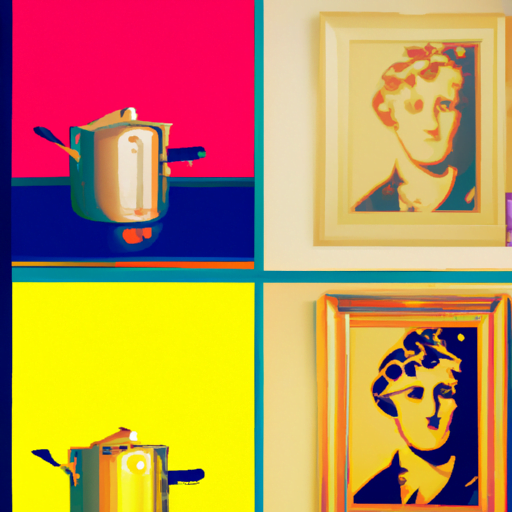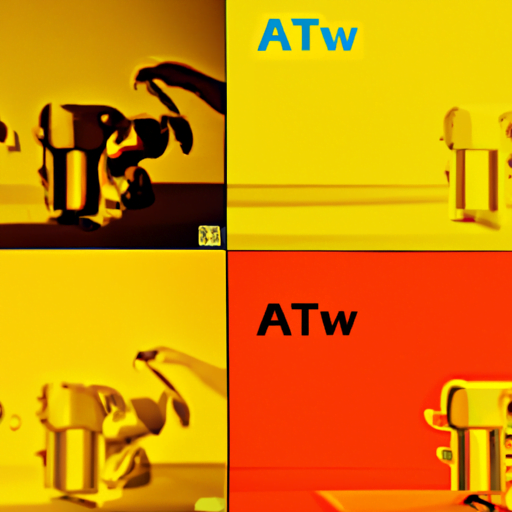
-
Table of Contents
Exploring the Role of AI in Enhancing Visual Design

Visual design plays a crucial role in capturing the attention of audiences and conveying messages effectively. From website layouts to product packaging, visual design is a powerful tool for businesses to communicate their brand identity and engage with customers. With the rapid advancements in technology, artificial intelligence (AI) has emerged as a game-changer in the field of visual design. In this article, we will explore the role of AI in enhancing visual design and how it is revolutionizing the creative industry.
The Rise of AI in Visual Design
Artificial intelligence has made significant strides in recent years, and its impact on various industries is undeniable. In the realm of visual design, AI has the potential to streamline and automate many aspects of the creative process, making it more efficient and effective. By leveraging machine learning algorithms and deep neural networks, AI can analyze vast amounts of data, identify patterns, and generate visually appealing designs.
One area where AI has made significant progress is in generating personalized visual content. With the help of AI algorithms, designers can now create customized designs tailored to individual preferences and demographics. For example, AI-powered platforms like Canva and Adobe Sensei allow users to input their preferences, and the AI algorithms generate visually appealing designs based on those inputs. This level of personalization not only saves time for designers but also ensures that the final output resonates with the target audience.
Enhancing Creativity with AI
Contrary to popular belief, AI is not here to replace human designers. Instead, it is a tool that can enhance their creativity and productivity. By automating repetitive tasks and providing intelligent suggestions, AI frees up designers’ time to focus on more strategic and creative aspects of their work.
One way AI enhances creativity is through the generation of design recommendations. AI algorithms can analyze existing designs, identify successful patterns, and provide designers with recommendations to improve their work. For instance, platforms like Dribbble and Behance use AI algorithms to analyze user preferences and suggest similar designs that might inspire designers. This not only helps designers stay up-to-date with the latest trends but also encourages them to think outside the box and explore new design possibilities.
Another area where AI excels is in automating repetitive design tasks. Designers often spend a significant amount of time resizing images, adjusting color schemes, and formatting layouts. AI-powered tools can automate these mundane tasks, allowing designers to focus on more creative aspects of their work. For example, Adobe’s Content-Aware Fill feature uses AI algorithms to automatically remove unwanted objects from images, saving designers valuable time and effort.
Improving User Experience with AI
Visual design plays a crucial role in shaping the user experience (UX) of digital products and services. AI can significantly contribute to improving UX by analyzing user behavior and preferences, and generating designs that are intuitive and user-friendly.
One way AI enhances UX is through the use of predictive analytics. By analyzing user data, AI algorithms can predict user behavior and tailor the design accordingly. For example, AI-powered chatbots can analyze user interactions and adapt their responses to provide a more personalized and engaging experience. This level of personalization not only improves user satisfaction but also increases conversion rates and customer loyalty.
AI can also contribute to improving accessibility in visual design. Designing for individuals with disabilities can be challenging, as different users have different needs. AI algorithms can analyze user data and generate designs that are accessible to a wide range of users. For instance, AI-powered tools can automatically generate alt text for images, making them accessible to visually impaired users. This not only ensures compliance with accessibility standards but also enhances the overall user experience.
Case Studies: AI in Visual Design
Several real-world examples demonstrate the impact of AI in enhancing visual design. Let’s explore a few case studies:
1. The Grid
The Grid is a website builder that uses AI algorithms to generate personalized designs based on user inputs. By analyzing user preferences and content, The Grid’s AI system creates unique layouts and color schemes that align with the user’s brand identity. This eliminates the need for manual design work and allows users to create visually appealing websites effortlessly.
2. Prisma
Prisma is a popular photo editing app that leverages AI to transform ordinary photos into stunning works of art. The app uses deep neural networks to analyze the content of an image and apply artistic filters that mimic the styles of famous artists. This AI-powered feature has gained immense popularity among users, as it allows them to create visually striking images with just a few taps.
3. Tailor Brands
Tailor Brands is an AI-powered platform that helps businesses create professional logos and branding materials. By analyzing user preferences and industry trends, Tailor Brands’ AI algorithms generate unique logo designs that reflect the brand’s identity. This eliminates the need for businesses to hire expensive designers and provides them with high-quality designs at an affordable price.
The Future of AI in Visual Design
As AI continues to evolve, its role in enhancing visual design will only become more prominent. Here are some potential future developments:
- Advanced Style Transfer: AI algorithms will be able to analyze a wide range of artistic styles and apply them to any given design, allowing designers to create unique and visually stunning compositions.
- Real-time Collaboration: AI-powered tools will enable designers to collaborate seamlessly, regardless of their geographical location. These tools will analyze user inputs and provide real-time suggestions, making the design process more efficient and collaborative.
- Emotion Recognition: AI algorithms will be able to analyze user emotions and generate designs that evoke specific emotional responses. This will enable designers to create more impactful and emotionally engaging visual content.
Conclusion
AI is revolutionizing the field of visual design by enhancing creativity, improving user experience, and automating repetitive tasks. It is not here to replace human designers but to empower them with intelligent tools that streamline the creative process. As AI continues to advance, it will play an increasingly significant role in shaping the future of visual design. By embracing AI and leveraging its capabilities, designers can unlock new possibilities and create visually stunning designs that captivate audiences.
